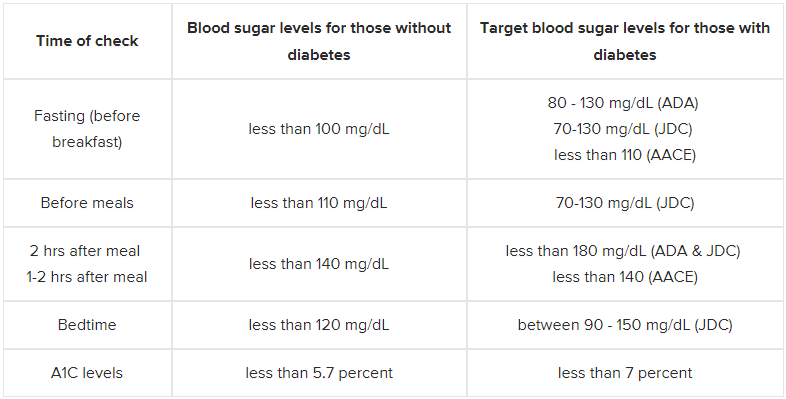Introduction
Diabetes is a severe health concern both in the US and globally, and due to this reason, it is necessary to examine the specific aspects of this condition. There are two distinct types of diabetes, which differ in manifestations and prognosis. This paper aims to investigate type 1 and type 2 diabetes, compare pathophysiology, symptoms, and causes for each, examine the prospects of future research, as well as provide personal input regarding the issue.
Comparison of Type 1 and Type 2, Pathophysiology, and Causes
Firstly, it is necessary to point out that both types of diabetes are chronic diseases, meaning that they affect a person’s body consistently and have a long-term impact on one’s health. According to Krzewska and Ben-Skowronek (2016), 5%-10% of individuals with diabetes have type 1, while the rest are diagnosed with type 2. The specific issue that both conditions cause is the ability of an individual’s body to produce insulin, which affects the levels of sugar in the blood. In general, Mellitus is a term that describes conditions affecting the metabolic processes of a body.
The pathophysiology of type 1 is facilitated through the lack of insulin in one’s body. According to the Diabetes Research Connection, Type 1 diabetes mellitus is characterized by early diagnosis in childhood or young adult age (Krzewska & Ben-Skowronek, 2016). In addition, the cause of this condition is an autoimmune response of a body affected by beta cells. In general, the body cannot recognize these cells, and due to this reason, they are destroyed (“Differences between type 1 and type 2,” n.d.). However, beta cells have a critical role in the process of producing insulin.
Type 2 diabetes mellitus has a connection to the behavioral components of a person’s life, which can help prevent the condition. For instance, research suggests that factors such as weight or engagement in sports activities affect the prospects of developing this condition (Malaguti-Boyle, 2016). It should be noted that unlike type 1, this specific disease is usually diagnosed in adults. Other elements that can affect the ability of one’s body to produce insulin are genetics and age. Type 2 pathophysiology is characterized by the preserved ability to produce insulin (Malaguti-Boyle, 2016). However, the cells of people with this disease develop resistance to it, resulting in the inability to regulate the levels of sugar.
Symptoms and Treatments
Due to the early onset and nature of the disease, symptoms of type 1 include weight loss with healthy eating habits and numbness of feet or hands in type 2. The American Diabetes Association describes the following general symptoms – “urinating often, feeling very thirsty, feeling very hungry, extreme fatigue, blurry vision, cuts/bruises that are slow to heal” (“Diabetes symptoms,” 2018, para. 1). Table 1 presents the data regarding blood glucose levels for people without diabetes and for those who have type 1 or 2. In addition, people with type 1 have hypoglycemia scenes, which do not occur in type 2 except when the condition is affected by insulin drugs. Treatment for both types includes using insulin through different methods of administration. Due to the nature of type 2, Malaguti-Boyle (2016) recommends a clinical nutrition diet. It is because the evidence suggests that this approach helps mitigate adverse effects of food consumption on glucose levels by choosing specific products such as vegetables and meat that were not processed prior.

Future Research and Personal Input
It is necessary to understand that the differences between the two types described above imply that approaches to research and investigation of prospective treatment vary as well. It is because both causes and impacts on the body of a person as well as on its ability to produce insulin occur differently. According to Heinemann (2017), future research on the topic includes the development of the artificial pancreas and clinical decision support systems that help patients create a proper treatment plan. The author emphasizes the importance of improving the continuous glucose monitoring devices that developers were unable to advance within the last fifteen years. In addition, “many patients use apps for their diabetes therapy” meaning that modern technology already allows individuals to control their conditions better (Heinemann, 2017, p. 863). All in all, it is evident that future research will be emphasizing the technological input into the detection and management of diabetes, together with artificial organ transplantation practices.
Research on diabetes and possible solutions raise some ethical issues and various opinions on the topic. For instance, the effect of genetics or the development of artificial organs has implications for discussion in the scientific community. In general, my opinion is that patient values should be respected in either case. However, current research implies creating approaches that would help people avoid the need to receive daily medication for diabetes. Thus, public policies should illuminate barriers for scholars who want to enhance the quality of life that people with diabetes have.
Conclusion
Overall, this paper provides a comprehensive explanation of the differences and similarities between type 1 and type 2 diabetes mellitus. The distinct difference between the two conditions is that in type 1 the body enables the process of insulin destruction, while in the second case the cells are unable to react to the produced insulin. The focus of future research should be on creating modern continuous glucose monitoring systems.
References
Diabetes symptoms. (2018). Web.
Differences between type 1 and type 2. (n.d.). Web.
Heinemann, L. (2017). Future of diabetes technology. Journal of Diabetes Science and Technology, 11(5), 863-869.
Krzewska, A, & Ben-Skowronek, I. (2016). Effect of associated autoimmune disease on type 1 mellitus incidence and metabolic control in children and adolescents. Biomed Research International, 2016, 1-12. Web.
Malaguti-Boyle, M. (2016). Evidence for the effectiveness of clinical nutrition therapy in diabetes mellitus type 2. Journal of the Australian Traditional –Medicine Society, 22(2), 74-82.
Olsen, N. (2017). What are the ideal levels of blood sugar? Medical News Today. Web.